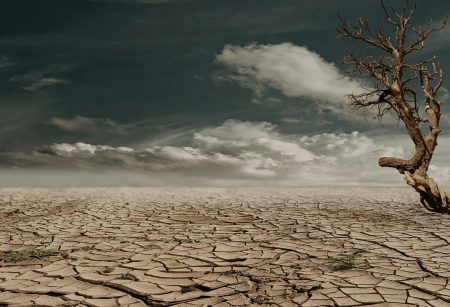
In This Article
Disasters, whether natural or human-induced, profoundly impact our planet’s delicate ecosystems. The environmental consequences of these events extend far beyond the immediate devastation, often leaving a lasting imprint on landscapes, biodiversity, and the overall health of our planet.
In this article, we will explore the environmental aspects of disasters, shedding light on the challenges we face and the urgent need for collective action to mitigate and adapt to the changing climate.
Natural Disasters and Ecosystem Disruption
Natural disasters, such as hurricanes, earthquakes, floods, and wildfires, can wreak havoc on ecosystems, disrupting the delicate balance that sustains biodiversity. In the aftermath of such events, habitats are often altered or destroyed, leading to the displacement or loss of plant and animal species. This disruption can have cascading effects on food webs, water quality, and the overall resilience of ecosystems.
For instance, hurricanes and floods can result in the erosion of coastal areas, threatening marine life and disrupting the breeding grounds of many species. Fueled by climate change, wildfires can decimate vast expanses of forests, contributing to deforestation and releasing large amounts of carbon dioxide into the atmosphere.
Human-Induced Disasters and Pollution
Beyond natural disasters, human-induced disasters, such as industrial accidents and oil spills, pose significant environmental threats. These events can release hazardous substances into the air, water, and soil, contaminating ecosystems and jeopardizing the health of both wildlife and human populations.
The Deepwater Horizon oil spill 2010 serves as a stark example of the environmental consequences of human-induced disasters. The spill released millions of barrels of crude oil into the Gulf of Mexico, causing extensive damage to marine life, coastal ecosystems, and fishing industries. The long-term effects continue to be studied, emphasizing the need for stringent regulations and preparedness to prevent and respond to such incidents.
Climate Change and Extreme Weather Events
The intensification of extreme weather events, attributed to climate change, further exacerbates the frequency and severity of disasters. Rising global temperatures contribute to melting glaciers and polar ice caps, leading to rising sea levels and threatening low-lying coastal areas. This, in turn, endangers ecosystems and disrupts the habitats of numerous species.
Changing climate patterns also contribute to prolonged droughts, heat waves, and erratic precipitation, affecting agriculture and water resources. As ecosystems struggle to adapt to these rapid changes, biodiversity loss becomes a pressing concern, with vulnerable species facing increased risk of extinction.
The Urgency for Collective Action
Addressing the environmental aspects of disasters requires a coordinated and global effort. Governments, businesses, communities, and individuals all play crucial roles in mitigating the impact of disasters and building resilience in the face of an uncertain future.
- Investing in Sustainable Practices: Governments and industries must prioritize sustainable practices to reduce their ecological footprint. This includes transitioning to renewable energy sources, implementing responsible waste management, and enforcing environmental regulations to prevent pollution.
- Enhancing Disaster Preparedness and Response: Improved disaster preparedness and response mechanisms are essential to minimize the environmental impact of disasters. This involves investing in early warning systems, developing resilient infrastructure, and ensuring efficient emergency response strategies.
- Conservation and Restoration Efforts: Conservation initiatives and habitat restoration projects can aid in preserving biodiversity and rebuilding ecosystems after disasters. Planting native species, protecting critical habitats, and supporting conservation organizations are crucial components of these efforts.
- Global Collaboration on Climate Change: Tackling the root causes of disasters necessitates global cooperation to combat climate change. International agreements, such as the Paris Agreement, serve as frameworks for collective action, emphasizing the need to limit global warming and build adaptive capacities.
Harnessing Technology for Environmental Resilience
In the face of escalating environmental challenges, technology emerges as a powerful ally in our efforts to bolster environmental resilience. Innovations across various fields contribute to our ability to monitor, predict, and respond to disasters with greater precision.
- Satellite Technology and Remote Sensing: Satellite technology enables real-time monitoring of environmental changes, helping us track deforestation, assess the extent of natural disasters, and monitor the health of ecosystems. Remote sensing allows for the collection of valuable data, facilitating informed decision-making in disaster response and recovery.
- Big Data and Predictive Analytics: Big data analytics play a pivotal role in predicting and mitigating the impact of disasters. By analyzing vast datasets, scientists and policymakers can identify patterns, anticipate environmental risks, and develop strategies to minimize the fallout. Predictive modelling assists in understanding how ecosystems may respond to different stressors, aiding in proactive conservation efforts.
- Climate Modeling and Simulation: Advanced climate modelling and simulation technologies provide insights into future climate scenarios. These tools allow scientists to assess the potential impact of climate change on ecosystems, helping to inform adaptation strategies and guide conservation efforts. By simulating various scenarios, we can better understand the complex interactions within ecosystems and formulate effective responses.
- Blockchain for Environmental Transparency: Blockchain technology can enhance transparency and traceability in environmental conservation initiatives. By establishing secure and verifiable supply chains, blockchain ensures that sustainable practices are upheld, discouraging illegal activities such as deforestation and wildlife trafficking. This transparency fosters accountability among stakeholders and encourages responsible environmental stewardship.
- Emerging Technologies in Environmental Remediation: Innovations in environmental remediation technologies offer hope for mitigating the long-term effects of disasters. From bioremediation techniques that use microorganisms to clean up polluted environments to advanced materials that absorb and neutralize contaminants, these technologies hold promise for restoring ecosystems impacted by human-induced disasters.
Conclusion
Disasters, with their far-reaching environmental consequences, underscore the interconnectedness of human activities and the health of our planet. The time for action is now, as we face the dual challenges of adapting to a changing climate and mitigating the impact of disasters on ecosystems. Through sustainable practices, preparedness, and global collaboration, we can strive to build a more resilient and harmonious relationship with the environment, ensuring a healthier and more sustainable future for future generations.



